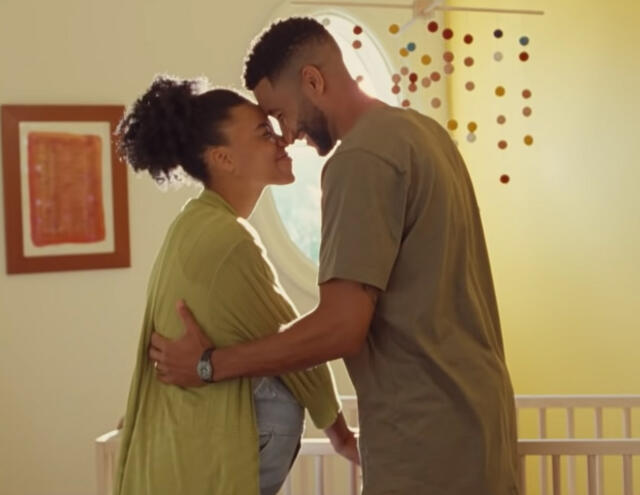
Putting Maternal Mortality in the Spotlight

“It gave me goosebumps.”
That was adjunct professor Stephen Friedman’s visceral reaction to a pitch by three MPA students in his course on the Art of Creating Social Impact Campaigns.

The students’ idea—to raise awareness of the disproportionately high rates of maternal mortality in the U.S.—was a “punch in the gut” Friedman was not expecting.
Over a 25-year career in media and consulting that included a stint as president of MTV, Friedman has repeatedly launched innovative, socially impactful campaigns that helped bring awareness to many critical issues, including the genocide in Darfur.
The course, which he taught for the first time at SIPA in the fall of 2018, seeks to apply the principles of storytelling to, as the public policy academic Marshall Ganz has said, translate “values into action.”
“The most complicated part of the class is, How do you translate a complicated social issue into something that gets past your analytic framework and hits you in the gut?” Friedman says, “because you have a lot of students at SIPA who are trying to do great things in the world and they come at it with an analytical rigor—an important rigor—but the most successful campaigns must also appeal to your emotions and values in order to change behavior.”
That fall day in class, Friedman heard a pitch from Maria José Diaz MPA ’19, Justine LaVoye MPA-DP ’19, and Jenise Ogle MPA ’19 that creatively used narrative technique to address what a recent article in Harvard Public Health magazine called “a human rights crisis.”
According to a 2017 UNICEF report, the global maternal mortality ratio declined by 44 percent from 1990 to 2015. However, data from the Centers for Disease Control and Prevention (CDC) showed that pregnancy-related deaths in the United States increased from 7.2 deaths per 100,000 live births in 1987 to 18.0 deaths per 100,000 live births in 2014, a rate higher than any other country in the industrialized world. A 2018 report from nine U.S. states revealed that 60 percent of all pregnancy-related deaths were preventable.
The disparity between white and black mothers is even more staggering, according to the CDC: 12.4 deaths per 100,000 live births for white women compared with 40 deaths per 100,000 live births for black women. The Harvard Public Health article also noted that for African American mothers, “the odds of surviving childbirth are comparable to those of women in countries such as Mexico and Uzbekistan, where significant proportions of the population live in poverty.”
“We have black women dying all the time from this, and the community doesn’t really know why they are at risk,” Ogle says. “For someone like myself who is African American, I didn’t know this, and I think the reason to focus on the social aspect of this issue is because there is a lack of awareness.”
Despite the dire statistics, the health of African American mothers has been underreported, only recently gaining some media attention because of Serena Williams’s story of a near-fatal birth experience and Democratic presidential candidate Senator Elizabeth Warren’s proposal to offer hospitals incentives to lower African American maternal mortality rates.
The reasons for this crisis are wideranging and, according to Ogle, stem from years of systemic racism and bias. A recent study by the Texas Department of State Health Services (DSHS) found that 8 out of 10 pregnancy-related deaths in that state could have been prevented with “one or more reasonable changes to the circumstances of the patient, provider, facility, systems, or community factors.”
systems, or community factors.” The students—all of whom had career experience in policy roles related to public health and gender—say they were astounded by the statistics.
“Even at SIPA, where we are studying policy,” LaVoye says, “this is still an issue that many people don’t know about at all.”
The students researched other awareness campaigns focusing on the issue of maternal mortality, many of which targeted the medical community. They decided to aim their messaging at mothers and their support networks, emphasizing the warning signs of the common causes of pregnancy-related deaths—like hemorrhaging, infections, and clots—and educating about self-care once new mothers leave the hospital.
“We saw in our initial research that most of the focus was on generating awareness among the medical community,” Diaz says. “It was interesting to see there was a gap when it came to the social aspect—pregnant women and people supporting them.”
The group’s creative proposal referenced recent pop-culture touchstones that blend cinematic storytelling with social activism—including Childish Gambino’s “This is America” and Beyonce’s “Lemonade”—along with powerful PSAs like “Sandy Hook Promise.”
Friedman was blown away by the approach, which employed a double narrative and a surprise ending: “The creative storytelling was elevated and palpable.”
“We want to emphasize that even during very joyous moments like having a baby, having a gender reveal, having a baby shower, that you also have to be wary and think about the warning signs as well,” Ogle says. “We want pregnant women to be there when their baby is born.”
The creative concept hooks the viewer by establishing a joyful tone as an expecting couple plans for the birth of their child. As the narrative continues, it becomes more somber, implying that the child is in danger—only to reveal that it is the mother who has died during childbirth. After flashing back through a sequence of opportunities to mitigate risks for pregnant mothers, the video concludes happily after all, with the mother alive and well and holding her new baby.
On the last day of the course, Friedman was talking to his successor at MTV, Chris McCarthy, and told him about the emotional student pitch he couldn’t shake.
“He said, ‘You never get goosebumps,’” Friedman remembers. Friedman initially did not think the campaign would be right for MTV, but he had piqued McCarthy’s interest. With television properties like MTV’s Teen Mom and Dear Mama on VH1, McCarthy felt the demographics were perfect for a campaign focused on maternal health.
“When Stephen shared the creative pitch from the SIPA students, I knew it was something that would resonate with our audience because the topic intersects with so many of the issues in which our audience is engaged—family, health care, and the life stage of young parenthood,” says McCarthy, who is president of the MTV, VH1, CMT, and Logo networks. “Stephen is a mentor and a pioneer in the field of social impact, and with his guidance and the students’ creative campaign, I felt we had a powerful way to address this important issue facing our audience.”
As the project progressed, strategic partnerships were secured with Every Mother Counts, an organization founded by model and activist Christy Turlington Burns, and Black Mamas Matter, a collaboration between the Center for Reproductive Rights and Black Lives Matter.
Then, Lena Waithe—the actress and screenwriter who recently made history as the first African American woman to win a comedy-writing Emmy—signed on to produce and narrate the PSA.

The students were brought on board as consultants to the project and planned to continue after the video launched on Mother’s Day. The campaign also featured a companion website, saveourmoms.com, which encouraged viewers to learn more about the issue.
“Not only did the students pitch us this breakthrough idea, they joined our team throughout the development of the campaign,” McCarthy says. “They helped with research and getting to know the nonprofits working on this issue. They were in lockstep with our team and the campaign partners as key decisions were made around the messaging and call to action. Before the launch of the campaign, we looked to the students to provide feedback on the final video treatments and online resources.”
“We were still those [SIPA] policy students but now we were in this fast-paced television media environment, and they were looking at us as the experts on the content and they were guiding us through this whole creative world,” Ogle says. “It was really exciting.”
The students’ ambitions for the campaign’s reach have grown as it evolved from a fictional project to a reality.
“I hope,” says Diaz, “a lot of people see it so that we can improve the community’s sense of responsibility for women’s maternal health.”
“Over half of these deaths are preventable,” says McCarthy, “and our hope is that this campaign will help sound the alarm about this serious issue and help moms receive the care, services, and support they need.”
Before enrolling in Friedman’s class in fall 2018, Diaz, LaVoye, and Ogle had never met. Now they are bound together in ways they never expected.
“Learning from Maria José and her experience in Chile and throughout the different public and private sectors, and from Jenise, a woman who is from the U.S. but has a very different lived experience than I do, I think that’s a very powerful thing,” LaVoye says. “I know that they will be on speed dial.”
Friedman hopes that the students’ maternal mortality campaign is just the beginning.
“That’s what was great about the students in the class,” he says. “I think students in every group presentation had a creative nugget like that, which had the potential to find its way into the world and have a positive impact.”
A week before the campaign was to air, Diaz, LaVoye, and Ogle had a chance to see a close-to-final cut of the video. They were pleased to see their artistic vision was intact.
“I watched it,” says LaVoye, “went into shock, and then cried.”
WATCH: Save Our Moms